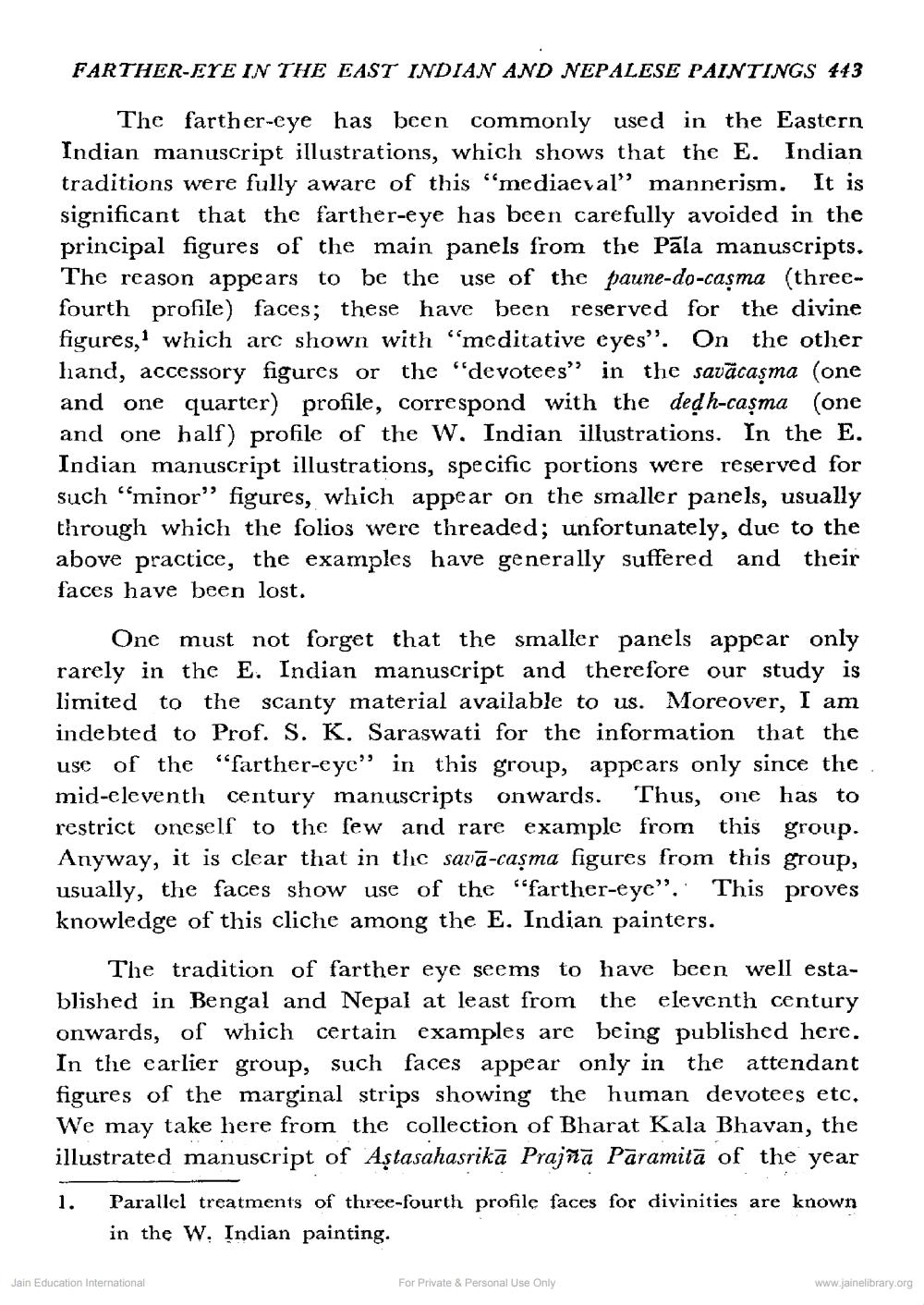________________
FARTHER-ETE IN THE EAST INDIAN AND NEPALESE PAINTINGS 443
The farther-eye has been commonly used in the Eastern Indian manuscript illustrations, which shows that the E. Indian traditions were fully aware of this "mediaeval" mannerism. It is significant that the farther-eye has been carefully avoided in the principal figures of the main panels from the Pala manuscripts. The reason appears to be the use of the paune-do-casma (threefourth profile) faces; these have been reserved for the divine figures, which are shown with "meditative eyes". On the other hand, accessory figures or the "devotees" in the savācaşma (one and one quarter) profile, correspond with the ded h-caşma (one and one half) profile of the W. Indian illustrations. In the E. Indian manuscript illustrations, specific portions were reserved for such “minor” figures, which appear on the smaller panels, usually through which the folios were threaded; unfortunately, due to the above practice, the examples have generally suffered and their faces have been lost.
One must not forget that the smaller panels appear only rarely in the E. Indian manuscript and therefore our study is limited to the scanty material available to us. Moreover, I am indebted to Prof. S. K. Saraswati for the information that the use of the "farther-eye" in this group, appears only since the mid-eleventh century manuscripts onwards. Thus, one has to restrict oneself to the few and rare example from this group. Anyway, it is clear that in the savā-caşma figures from this group, usually, the faces show use of the “farther-eye". This proves knowledge of this cliche among the E. Indian painters.
The tradition of farther eye seems to have been well established in Bengal and Nepal at least from the eleventh century onwards, of which certain examples are being published here. In the earlier group, such faces appear only in the attendant figures of the marginal strips showing the human devotees etc. We may take here from the collection of Bharat Kala Bhavan, the illustrated manuscript of Aștasahasrika Prajñā Pāramitā of the year 1. Parallel treatments of three-fourth profile faces for divinities are known
in the W. Indian painting.
Jain Education International
For Private & Personal Use Only
www.jainelibrary.org




